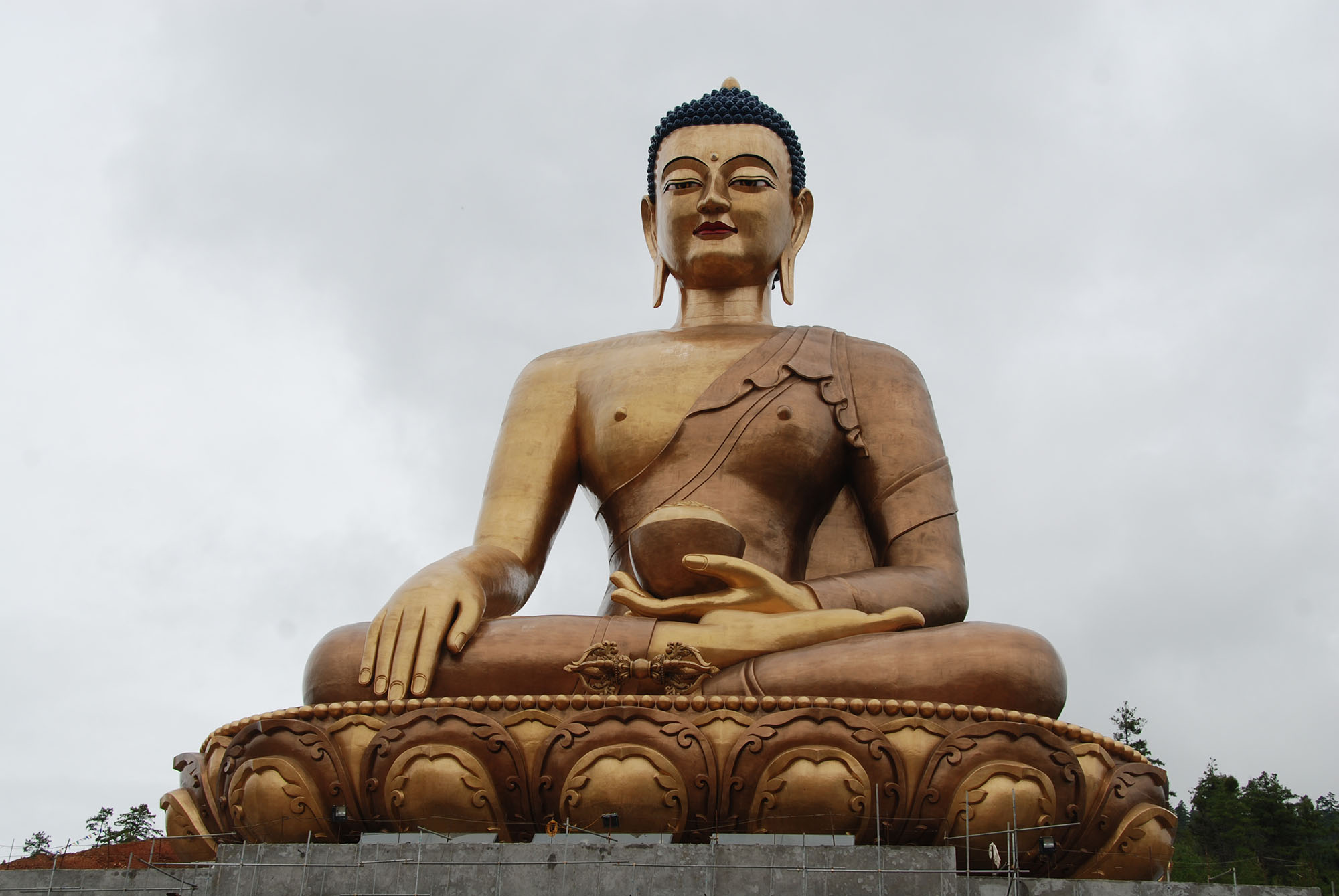In Buddhism, there are many gods. This article will talk about some of the Buddhist gods—Bodhisattvas and Buddhas—you’ll see in temples and homes across Bhutan, and what they symbolize.
Zambala
Zambala is the god of wealth. A manifestation of Chenrizig, the Buddha of Compassion, there are five different Zambalas. For instance, the Yellow Zambala holds a mongoose, whereas the White Zambala sits on a snow-lion or a dragon.
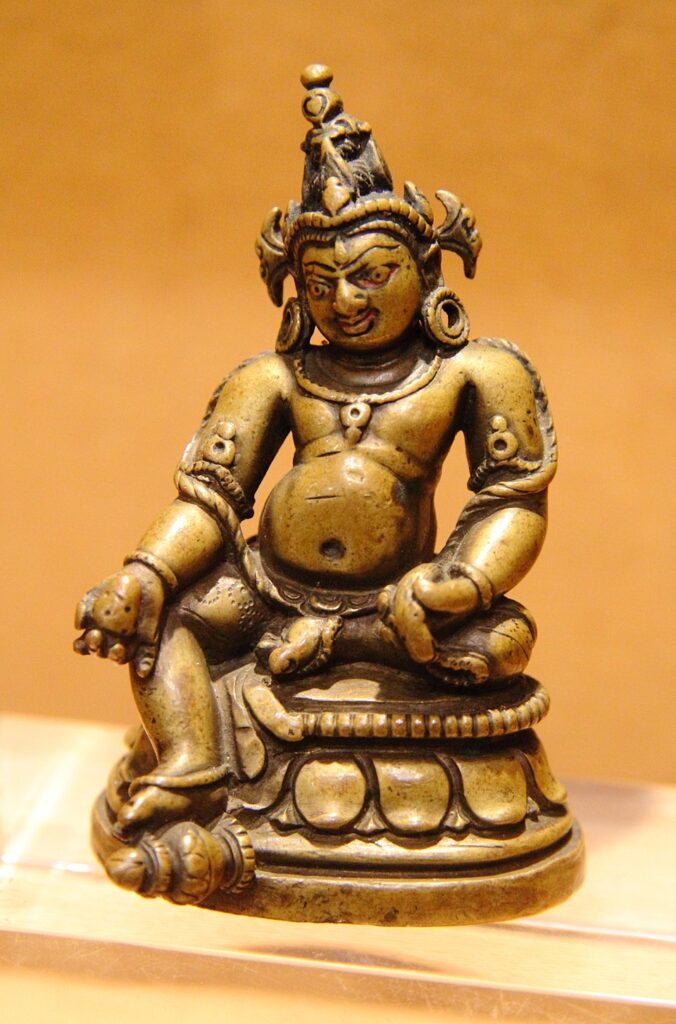
Chenrizig (Avalokiteśvara)
Chenrizig, the god of compassion has multiple hands and heads. They depict his ability to help all beings. You’ll find a sculpture of this god on a slate outside the entrance to the Memorial Chorten in Thimphu.
Manjushri
Manjushri is the Buddhist god of wisdom, knowledge, and intellect. He is one of the eight “great” disciples of Buddha Shakyamuni. He has a sword in his right hand and a text in his left.
Buddha Shakyamuni
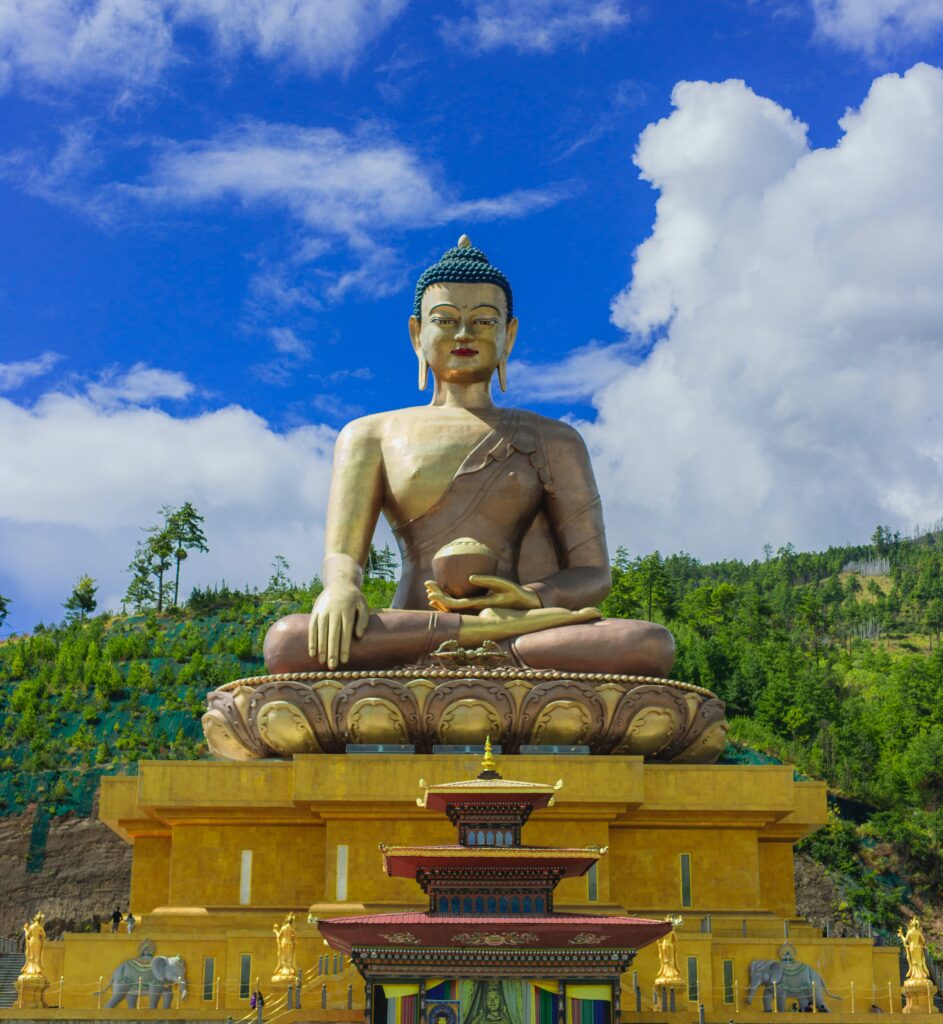
Buddha Shakyamuni, also known as Sangay Tempa, is the present Buddha. You’ll find a giant-sized statue of Buddha Shakyamuni atop a hill in Thimphu.
Vajrapani (Guru Dorji Drolo)
Also known as Dorji Drolo, Vajarapani is one of the eight manifestations of Guru Rinpoche. It was in this form that Guru rode to Taktsang, the Tiger’s Nest Monastery in Paro.
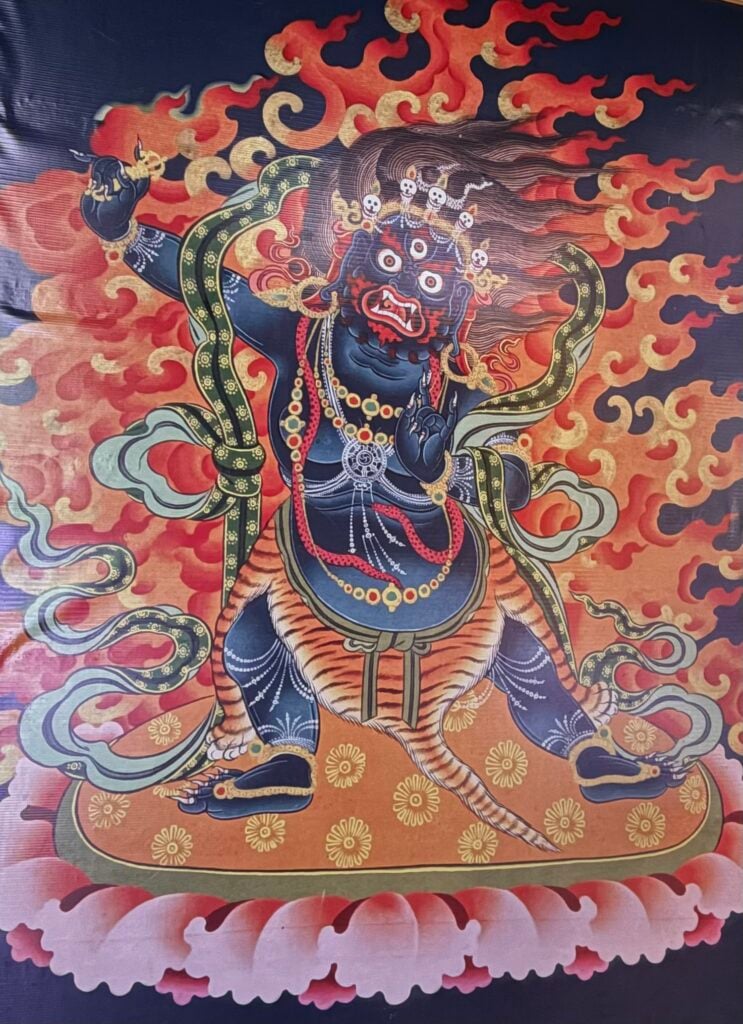
Guru Rinpoche
Buddhists in Bhutan widely regard Guru Rinpoche as the Second Buddha. This 8th-century saint, who arrived from Nepal, continues to influence Bhutanese life even today. Many of Bhutan’s temples are dedicated to Guru Rinpoche, as he is believed to have blessed or consecrated them. Moreover, during Tshechus, most mask dances and plays are based his teachings.
Green Tara
The Green Tara represents protection. She is considered the mother of all Bodhisattvas—beings who have started the process of attaining enlightenment for the benefit of all. Tara translates to “she who liberates.”
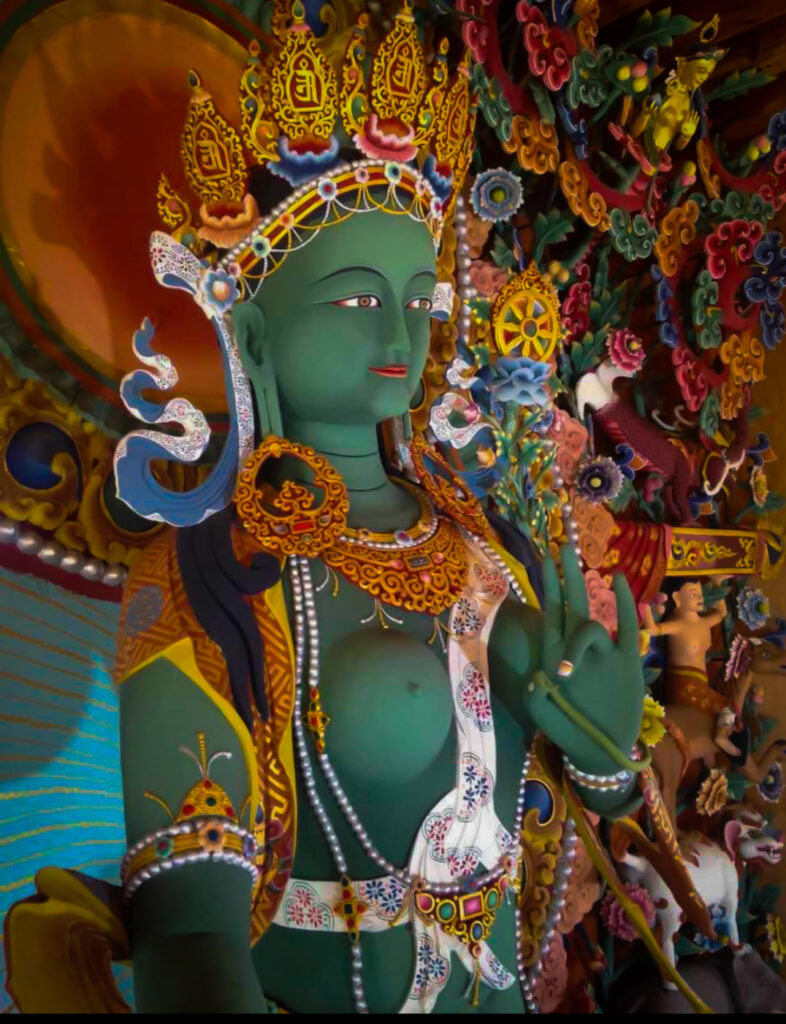
Sarasvati
Sarasvati is one of the 21 Taras. Considered as the goddess of poetry, Sarasvati is associated with music, learning, and the literary arts. You might see a poster of this Buddhist goddess at Pangrizampa, a traditional astrology school and center.
Yama
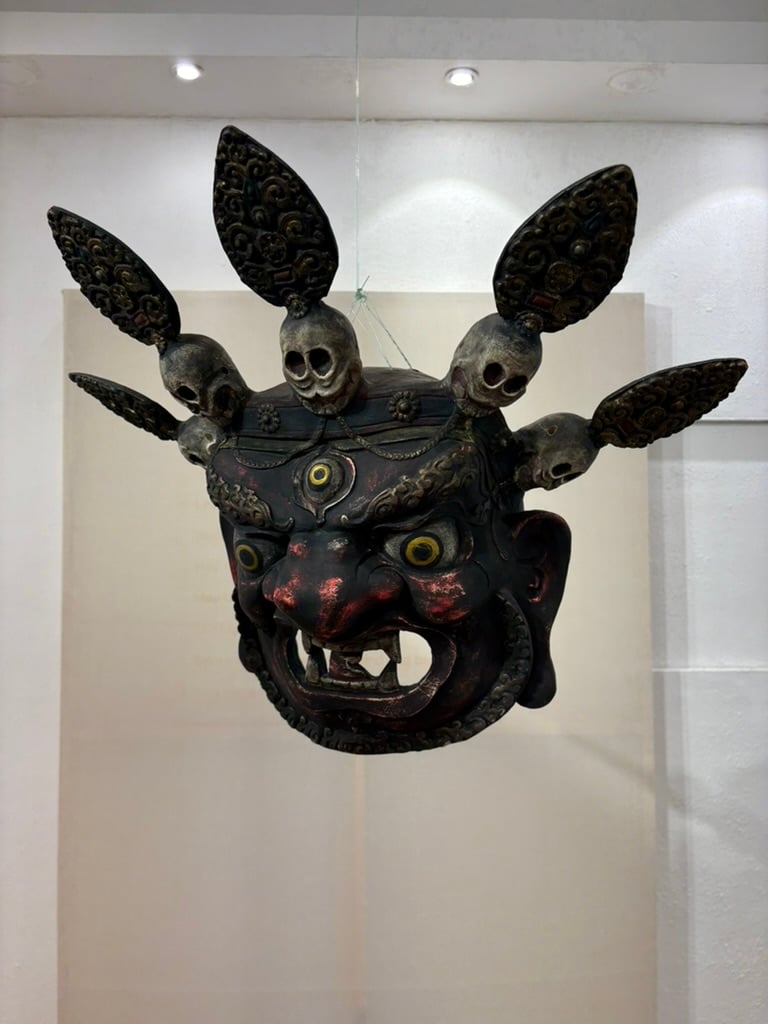
Known as the “Lord of Death,” Yama presides over death and resides in the “hell realm,” one of the six realms in the cycle of rebirth. Additionally, he appears in the Buddhist Wheel of Life.
Yama is featured during Tshechus, where Bhutanese are encouraged to attend in order to familiarize themselves with the concept of death.
Book your trip to Bhutan today! Contact us at [email protected] or call +975 1711-2338 any time, anywhere!


